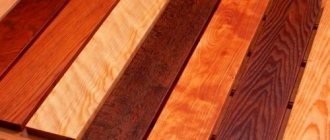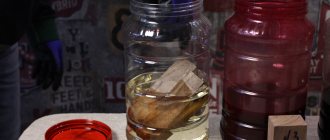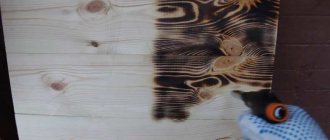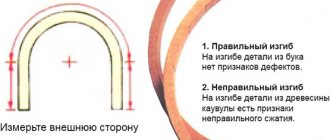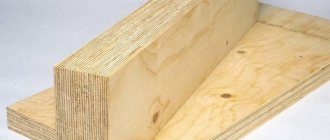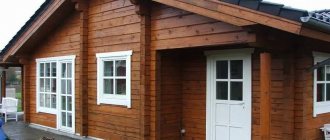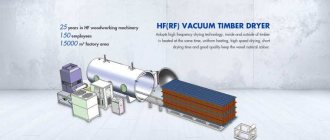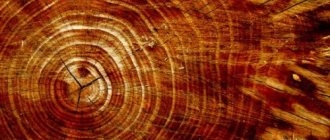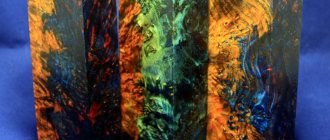Great demand for construction and finishing materials made of wood is associated with the cleanliness, environmental friendliness and good qualities of wood. In recent decades, other raw materials have been actively developed that are not affected by moisture, deformation, rotting and other defects. However, synthetic products often capture the beneficial properties of wood, so developments to find new ways to increase the durability and qualities of natural materials continue today. The pinnacle of hardening beams, boards and other lumber is the heat treatment method.
Why heat treatment of wood is needed
Let's start with the fact that heat treatment came to us from Finland. It was developed in order to enhance the physical properties of wood. To obtain thermally modified wood, it is necessary to dry it and treat it with steam at high temperatures.
What does it mean? The texture of the wood changes because the fibers split and the porosity inherent in the wood disappears.
After such an operation, the raw materials are not afraid of moisture, temperature fluctuations and parasites. Don’t worry that the material will lose its natural properties - this is not true. Wood still remains a good heat conductor and still smells, while having all the properties of high-quality species.
Step-by-step manufacturing instructions
There are two manufacturing options. The first is suitable for those who do not have a suitable kiln and do not need to burn large volumes of wood. The second is for those who still have a stove that is more or less suitable for such purposes.
Cooking in water
Place the preparations in a large pan, bucket or barrel. Pour in the required amount of water. Place on fire (it is important to maintain maximum temperature). If the water evaporates, add boiling water. Boil for 2 hours. Take out the blanks. Wrap in newspapers (several layers). Place near a heat source.
In a few days you will receive wonderful material that will fully meet the requirements you need.
Firing in a kiln
First you need to make sure the wood is dry.
It is important that it has not been treated with chemicals, paints or varnish
- Preheat oven to 200 degrees.
- Place the workpieces on a wire rack, which is best placed in the lower part of the oven (you can first lay down paper).
- Place a container of water at the top.
- Dry the wood in the oven for 2 hours.
- After 2 hours, add water to the container.
- Reduce temperature to 100 degrees.
- Wait another half hour.
Such wood will last you a very long time. It tolerates any temperature well and does not require the use of reagents.
Wood heat treatment technology
The first thing worth focusing on is that there are two ways to process wood:
- Single stage;
- Multistage.
Let's look at each of them in detail. The first method is as follows:
- Special chambers are used for processing wood materials. The raw materials are placed there and drying occurs there. The temperature in the chamber reaches one hundred degrees. All moisture present in the material evaporates.
- The next stage is steam treatment. The temperature rises to two hundred degrees. Processing lasts about a day. The raw material acquires a unique shade and the characteristics and properties increase.
- At the last stage, the temperature decreases and the chamber cools down. Wood after processing should contain no more than six percent moisture.
The second method is to use only steam, the pressure of which is constantly changing. The method is considered the most resistant, since thanks to it the protective properties of the material are much higher.
Production stages
Thermal wood is produced in Moscow or another city using special equipment. At the same time, the production technology does not provide any additional components. Heat treatment of wood is carried out by exposing raw materials placed in a sealed chamber to steam. The blanks are made from oak, ash, beech, walnut, and less often pine.
Initially, the technology of heat treatment of wood in its modern form was developed by Finnish specialists. The prepared raw materials in a closed module, in the absence of oxygen access, are subjected to multi-stage exposure to steam heated to 185-212 C. Such progressive heat treatment of wood has become used not only in Europe, but also in Canada and Russia. The following stages are involved:
- Heating the workpiece. First of all, equipment for thermal wood heats the material placed inside to 13-150 C. Next, using the cooking method, the wood is exposed to steam for 5 hours.
- Drying. Heat-treated lumber is dried, reducing the moisture level of the raw material to 10%. Thermally modified wood remains in the drying equipment for 2-3 days to achieve optimal parameters.
- Excerpt. In closed conditions, the temperature is raised and saturated with water vapor at elevated pressure. This technology process gives thermally modified wood its characteristic hardness and unique color. The palette changes depending on the thermal regime, and not on the duration of treatment. Resistance to external moisture increases, putrefactive phenomena are eliminated and further deformation does not occur.
Read also: How to choose a starting capacitor for a single-phase motor
Features of the technology
It must be taken into account that a mode of 190 C will only provide a decorative effect without significantly affecting the performance characteristics.
In most cases, heat treatment is carried out at 200-230 C. This increases resistance to rotting several times. This material can be used in the production of furniture, decor, window frames, and interior doors. The price of thermally modified wood, which has been exposed to more than 230 C, will be higher, since its properties will noticeably improve. The board will become resistant not only to rotting, but also to swelling. As a result, the material can be used for almost any outdoor work or aggressive environment, for example, in swimming pools, saunas, baths, etc.
In Germany, heat treatment of wood, the price of which varies depending on the type of wood, the technology used, and can range from 25,000 rubles. up to 80,000 rub. per cubic meter, carried out in an oil environment. A dry edged board is placed in oil at 180-220 C, kept for 3-4 hours. How to make a thermal tree with your own hands is presented in the video. There is also a technique for processing boards in inert gases and a nitrogen atmosphere at elevated pressure. Oxygen levels should not exceed 2%.
Comparative characteristics of wood thermal modification technologies are presented in the table.
Is it possible to dry the timber to a moisture content of 6% in 72 hours and obtain a thermal timber with a cross-section of 300x300 mm? Wood drying experts say no. But the Pobeda research and production association claims that this is possible - using a camera developed at the NPO for modifying wood. The general director of the DrevThermo trading house (co-founder of NPO Pobeda) Oleg Shulman told a correspondent of our magazine about the peculiarities of the thermal chamber’s operation.
– Oleg Isaakovich, please tell us why you decided to develop equipment for heat treatment?
– Russian consumers have been familiar with thermowood for more than 15 years, and every year the scope of its application is expanding. Thermowood has established itself in the domestic market as a modern material for the exterior and interior decoration of houses, saunas and baths, as a material for the manufacture of floor coverings, coverings for terraces, patios, the construction of garden paths, areas near swimming pools, the manufacture of stairs, interior items, as well as garden furniture, landscape design elements and fencing. We analyzed existing heat treatment technologies (Bikos-TMT, Vacuum Plus, Mirako, Fromsseier, Menz-Holz, Retification, Plato, Thermowood) and came to the conclusion that their main disadvantages are increased requirements for the quality of raw materials (wood must be at least the first varieties) and high energy consumption (the duration of heat treatment can take up to 20 days). Using none of the technologies used, it is impossible to obtain thermally modified timber or logs of low cost in a short time.
Several years ago, thermal timber began to be produced in our country. Wooden house-building enterprises became interested in this material. Considering the popularity of thermal modification technology in Russia, our research center conducted a survey of house-building companies, which confirmed the demand for heat-treated timber or logs, as well as the desire to produce them in their own production facilities.
– What is special about your technology?
– The technology developed by the engineer of our research center Oleg Moichkin, compared to those that are common now, has differences in the methods of heating wood and removing moisture. Thermal treatment modes are developed in such a way that it is possible to use raw materials with a moisture content of up to 100% (freshly cut); pre-drying of the wood before heat treatment is not required. Thermal modification is carried out in just one cycle, its duration depends on the rock and size of the material being processed, and according to existing technologies, heat treatment is carried out in several stages. Reducing the duration of heat treatment allows you to reduce energy costs to 1200 rubles/m 3. The minimum costs associated with energy resources using existing technologies are 5,000 rubles/m 3 .
According to the laws of thermodynamics, the heat treatment of 1 m 3 of wood requires at least 250 kW of electricity. The processes occurring in the chamber cannot be described by these laws, since the efficiency of our camera is close to 200% (according to existing technologies, the efficiency of the camera does not exceed 80%). Based on the results of studies of the structure of electrical matter by scientist Yuri Rybnikov and his periodic table of electroatoms, the result obtained is quite explainable.
– Is your technology analogous to what Thermowood presents on the market?
– Finnish Thermowood technology cannot be compared with ours: they are different. Methods of wood processing and drying have been studied for a long time. But in fact, the processes that describe this or that physical process cannot be reproduced in practice with 100% accuracy. The classification of drying types and methods is usually based on heat transfer methods. In our heat chamber, wood is simultaneously treated with infrared radiation, convective and conductive drying. Energy consumption is minimal due to the fact that no electricity is required to start or complete one of the heating processes. Thermal modification of wood takes place in an environment of superheated steam. During the heat treatment process, the wood acquires a rich, noble brown tint, uniform throughout the entire cross-section. After thermal modification, the material can immediately be subjected to mechanical processing and coated with paints and varnishes.
Read also: Body-centered crystal lattice of metal
– Under what conditions does the heat treatment of timber take place?
– At the moment, thermal treatment modes have been adjusted to produce thermal timber from birch, pine, spruce, linden and aspen wood. When processing aspen wood, it is necessary to take into account more parameters than for wood of other species in order to reduce internal stresses in the resulting material. It is better to heat timber with a cross section of 300×300 mm at a temperature of 160-170°C for 72 hours. With this mode, the bending and chipping strength of wood is slightly reduced. The high processing temperature (180-200°C) makes it brittle, and it also darkens greatly, which worsens its aesthetic qualities. Processing the wood of the above species requires different times, but the difference is only a few hours. In addition to thermal timber, the chamber is designed for processing rounded logs (up to 30 cm in diameter) and lumber. The volume of a one-time loading of the chamber is 5 m 3 , after processing the volume of the finished product is 3.5 m 3 .
– For the industrial production of house kits, a chamber with a volume of 5 m 3 is small. Are you planning to increase its size?
– Since the processes taking place cannot be described using mathematical algorithms, and when creating a large-volume chamber, it will be necessary to work out thermal modification modes, the parameters of which will be calculated taking into account the large volume of wood being processed. We are already working on creating chambers with a one-time loading volume of 10-12 m3 and 20-25 m3.
– How are camera modes controlled?
– Now the chamber is controlled by simple automation, and the heat treatment mode is adjusted manually. As the chamber size increases, all processes will be fully automated. The operator will only need to set the necessary parameters before loading the raw materials, close the chamber, and after completing the process, unload the heat-treated materials.
– How is the camera installed at an existing enterprise for the production of prefabricated wooden houses?
– The camera is quite easily and quickly integrated into the existing technological process. If a company is engaged in the production of house kits from profiled timber, then additional space will be needed to install the camera, and the machines that are available in the production for processing profiled timber can also be used for processing thermally modified material. There are no restrictions. The production of a new type of product - thermal timber - allows you to expand the range of products produced by the enterprise and does not create difficulties in work. In their price segment, thermally-treated timber or logs will compete with laminated timber, and in the construction of wooden houses from profiled timber they will replace the latter.
– You said that the enterprise will need additional space just to install the camera. Which ones exactly?
– A chamber with a loading volume of 5 m 3 occupies about 9.5 m 2, its length is 6.7 m, width and height are 1.5 m. For an industrial enterprise this is a small area.
– Substances that are released from wood during heat treatment are environmentally unsafe. How is the issue of recycling waste generated during wood modification resolved?
– Our chambers are equipped with special recycling systems, so no harmful substances are released during the heat treatment process, which indicates the environmental safety of the process.
– Usually, after high-temperature treatment, wood acquires a burning smell. Does your thermal timber or thermal log have it?
– Pyrolysis products that are formed during the thermal modification of timber or logs are removed during processing, which allows the material to be immediately transported to the construction site after thermal treatment, rather than keeping it in a warehouse to remove odors.
Wood classes
There are three classes of processed surface.
Let's take a closer look at them:
- When processing the first class, the temperature is quite low - up to 190℃. Considered to be quite weak. As for the color, it practically does not change.
- During processing of second class wood, the temperature reaches 210℃. Resistance to rotting appears and the properties of the material increase.
- In the third class of treatment, the temperature reaches 240℃. The color changes to dark saturated. All properties reach their maximum limit.
Most often, the processing class is determined by the customer. Each class has its own cost.
Types of cladding
There are two types of façade cladding with planken.
The first one is closed.
Thermal boards are fastened together with metal strips 150x15 mm on the basis that the width of the boards is less than 100 mm.
The planks are laid out in rows on a flat surface, keeping in size the height of the wall that will be covered. The frame stencil is transferred to the resulting area
Particular attention is paid to the imprint of the timber in order to visualize its width
Metal strips are applied perpendicularly to the boards so that they have a protrusion on each side of the individual plank by approximately 10 mm. Each is attached to the board with two self-tapping screws. The protruding parts of the fasteners serve a dual purpose. The lower lug is inserted between the beam and the previous plank, the upper eye is screwed to the beam. Thus, gradually all the plank laid out on the ground will be transferred to the facade.
The second option is cheaper and faster.
The thermowood plank is attached with self-tapping screws directly to the joists. This method is more durable. Fastening should be done using stainless steel screws. This will eliminate the possibility of rust in the future. The corners of the structure are lined with the same material as the main part of the facade. In this case, two boards are fastened at right angles.
Equipment for heat treatment of wood
The main and irreplaceable equipment is the camera. It looks like an elongated tank. The chamber has a special stand on which the log lies during processing.
Puffs of steam enter evenly and are distributed along the entire length of the tank. The chamber functions as a kind of wood dryer. Moreover, the chamber can heat the air and also pump it out. This is necessary for the drying process.
In addition, inert gas and organic oils necessary for the heat treatment process are supplied to the chamber. The material is fired in the tank at fairly high temperatures, and the moisture content of the treated wood fibers is adjusted.
Moreover, there are several types of cameras. Usually the only difference is that they process different types of trees. The best producers on the market are considered to be Germany, Norway, Finland, France and Holland.
Creating a DIY Process
Thermal wood is produced on an industrial scale using special equipment. Those who are interested in how such a process can be implemented on their own will be disappointed. It will not be possible to completely repeat everything that is done in factories for the simple reason that the technology is very difficult to implement. But at home it is simply impossible.
As you know, wood without proper treatment rots and quickly becomes unusable. At home, although you won’t be able to approach industrial-scale production, there are several good options:
- tarring;
- burning;
- antiseptic treatment.
That is, it is still possible to make heat-treated wood with your own hands. Moreover, all this allows you to significantly extend the service life of wooden products and structures. Taring and the roasting process are traditional methods. They were used in practice by our grandfathers and their parents.
If necessary, you can treat with chemicals that are specifically designed for this purpose. However, as already noted, the environmental friendliness of the material is lost. Therefore, they should be used consciously and not in all cases.
Benefits of treated wood
Before heat treating lumber, you need to study the advantages that the treated board will have. It is worth noting that treated wood is very different from ordinary wood.
- Increasing the service life of products - wood fibers no longer absorb moisture due to new physical properties. Wood that has undergone thermal modification is not capable of allowing the raw material to swell or crack. Polysaccharides evaporate and because of this, parasites and insects will no longer choose this place. This is why you can use lumber much longer.
- Fire safety - the fibers become more dense, since the composition contains a much smaller amount of oxygen, that is, the material, if there is a possibility of fire, will burn much more slowly than ordinary untreated raw materials.
- A more pleasant appearance - you will notice how the shade of the wood has changed significantly - it has become deeper and more saturated, like the highest grade wood.
- Improved characteristics - the material becomes more resistant to precipitation and parasites. It often happens that trees are attacked by the following pests:
Fungus - it is capable of destroying first the top layer of wood, and then the inner one.
Mold - if wood is infected with this infection, you may forever lose your favorite piece of furniture or raw materials for the construction process. If mold growth is not stopped in time, it can cost you money.
Woodworm - you've probably observed how a healthy tree acquires eaten holes and rot next to them. They are the ones who turn the wooden surface into dust.
But, thanks to processing, this will never happen to your lumber.
Making a box
First of all, it is necessary to make a pedestal for the vegetable storage facility up to 1 m high. This will isolate the bottom of the storage facility from the cold balcony floor. After this, it is necessary to build a frame from the beams, which is then sheathed with plywood. Insulation is placed deep into the pedestal.
After installing the pedestal, you can begin making the frame for the storage walls. The prepared beams must be connected into frames and reinforced with self-tapping screws around the perimeter of the pedestal. On both sides, the side frames are connected by auxiliary elements using metal corners. After this, the vegetable storage area is lined with plywood on all sides.
After the container is ready, you need to build an internal box for storing vegetables. The dimensions of the box are calculated so that on each side it is 100-150 mm smaller than the pedestal. The frame of this box is also constructed from bars, then sheathed with material and insulated. If you want to store vegetables on the balcony without heating, then you need to protect the box and drawer with two layers of insulation and attach foil insulation on top.
If vegetables will be stored without electricity, then the inner box is installed on a pedestal, and if the vegetable storage will be heated, then it must be placed on legs. The legs can be made from beams up to 10 cm high.
Photo of wood heat treatment
Do-it-yourself automatic thermal camera
A little news, in case anyone is interested in what will happen.
Our self-written program turned out to be, to put it mildly, not very correct. Therefore, we will resort to the help of experienced programmers. And here you can already have fun with the functions. What we want to implement:
Firstly, the PLC-73 has three freely assignable buttons, each of which will be included in the menu for editing the parameters of a certain mode: Drying, frying, cooking. In the Mode Parameters Menu, you can select the temperature inside the chamber, the temperature in the product to switch to the next mode, or completely disable this mode. In the future, Roasting will also have the ability to activate/deactivate the smoke supply.
Secondly, the display on the mode indicators and the display of the target and current temperature on the screen.
Well, thirdly, it is possible to configure the transition to the next mode not by the temperature of the sausage, but by time.
I will be glad if people who have worked on professional equipment can advise and correct my thoughts on the modes.
Well, the second important update is that they started designing a new building, otherwise plywood, of course, is not serious. They decided to make the frame from an aluminum structural profile and cover it with stainless steel sheets
They decided to make the frame from an aluminum structural profile and cover it with stainless steel sheets.
As you can see, the airflow and heating element will be located on top of the chamber; the grille is made for better distribution of hot air, so that hot heated air is supplied along the walls. There, to the heating element, the drip humidifier will be installed. I made ventilation holes on top, since my fan gets noticeably hot, and in general, there is nothing to do with heat there. The equipment will be on the left; I also designed the hole for the controller in advance.
The ventilation of the chamber has not yet been thought out, but there are already ideas, most likely on valves and servos.
If you are interested, once we finish the design, I will post all the estimates, drawings and models. Although even at this stage it is already very expensive... Only the frame with all the fasteners, WITHOUT taking into account the stainless steel sheet, comes out to more than 20 thousand... Therefore, I bought doshiraki and began saving money for the body
Well, let me remind you so that the questions don’t arise: “It’s expensive and complicated, you can make sausage in the oven, why are you showing off?” - This is not just a sausage chamber, but also a hobby. Designing and creating something new is very interesting!
Message modified: rwxxik, 16 July 2022 - 17:25.
Flaws
Among the disadvantages, one can note the fact that heat-treated boards are quite expensive.
However, taking into account the unlimited service life and many unconditional advantages, the disadvantage becomes less significant and determines the purchase.
Despite its resistance to UV radiation, experts still recommend treating the material with protective impregnations.
Although the sun's rays are not capable of harming the physical and mechanical properties of products, they can harm the decorative layer. A surface not treated with a protective coating will fade after a few years.
Foundation preparation
After delivery, it is better to immediately place the metal structure at the place of intended use. To do this, it is necessary to prepare the foundation taking into account the following factors:
- relief of the site;
- GWL level;
- soil type;
- snow and wind loads.
On flat terrain and gravel, coarse sand and rocky soil, a garden house can be placed without a foundation, on a crushed stone bed compacted with a vibrating plate. With a low groundwater level on a flat area, the dacha is usually supported by pillars made of reinforced concrete or solid wall blocks.
Screw piles have no restrictions on geological conditions and terrain. For a 20-foot container, 6 piles with a load-bearing capacity of 1.5 tons each are sufficient. The most convenient option for such a home is considered to be a foundation with a plinth and technical underground.
Communications must be brought into the area before installation, and a hatch must be cut into the metal floors to connect them.
Step-by-step manufacturing instructions
There are two manufacturing options. The first is suitable for those who do not have a suitable kiln and do not need to burn large volumes of wood. The second is for those who still have a stove that is more or less suitable for such purposes.
Cooking in water
Place the preparations in a large pan, bucket or barrel. Pour in the required amount of water. Place on fire (it is important to maintain maximum temperature). If the water evaporates, add boiling water. Boil for 2 hours. Take out the blanks. Wrap in newspapers (several layers). Place near a heat source.
In a few days you will receive wonderful material that will fully meet the requirements you need.
Firing in a kiln
First you need to make sure the wood is dry.
It is important that it has not been treated with chemicals, paints or varnish
- Preheat oven to 200 degrees.
- Place the workpieces on a wire rack, which is best placed in the lower part of the oven (you can first lay down paper).
- Place a container of water at the top.
- Dry the wood in the oven for 2 hours.
- After 2 hours, add water to the container.
- Reduce temperature to 100 degrees.
- Wait another half hour.
Such wood will last you a very long time. It tolerates any temperature well and does not require the use of reagents.
Where is thermowood used?
Thermally modified wood is not only aesthetically pleasing, but also a reliable material for external and internal finishing of terraces, cottages, wooden houses, summerhouses and even floor coverings.
Thermowood is used everywhere:
- In gazebos, on summer verandas - such areas are unheated and open. That is why, when designing and constructing, you should think about using a stable and durable material that is “not afraid” of temperature changes, winds and heavy rainfall. As a result of using TMD, structural elements will retain their original quality and appearance: floors and walls will not crack or dry out - there will be no need to renew the coatings annually.
- On facades, thermal board cladding will last for many years and retain its original appearance. In addition, such a facade does not require special expensive maintenance - classical means will do.
- In baths, saunas, bathrooms and adjacent areas. Thermowood has excellent resistance to moisture, mold and mildew, heats up slowly and practically does not conduct heat.
- On country and garden paths. Such elements will not only decorate the site, but will also greatly facilitate access even in the most unfavorable weather conditions. The material can withstand increased loads, which ensures its durability.
